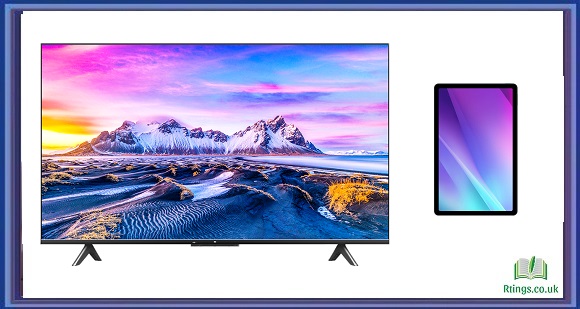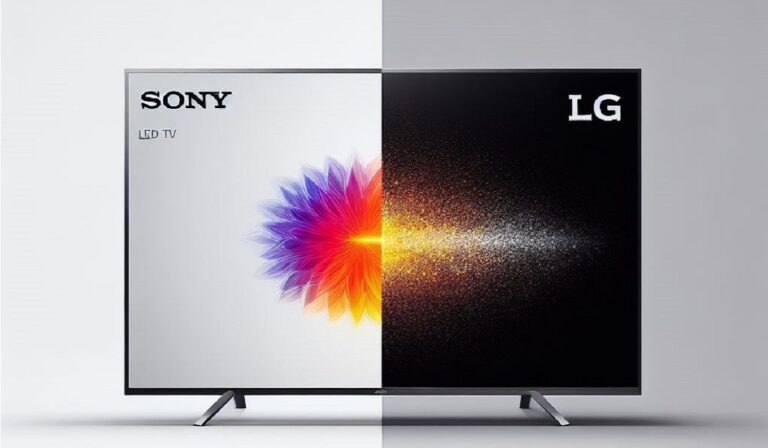Soundbars have become an increasingly popular audio solution for enhancing the sound quality of modern televisions. They offer a streamlined and space-efficient alternative to traditional multi-speaker home theater setups. When shopping for a soundbar, you’ll often come across models labeled “2.1” and “5.1,” which refer to the number of audio channels and subwoofers they include. This comprehensive guide explores the critical differences between 2.1 and 5.1 soundbars, including their audio capabilities, immersive experiences, and suitability for various setups.
Understanding the Basics of Soundbars
Before we delve into the differences between 2.1 and 5.1 soundbars, let’s briefly review the fundamental components and functions of soundbars:
Soundbar: A soundbar is a single, elongated speaker system designed to improve the audio quality of your television. It typically consists of multiple speaker drivers, including woofers and tweeters, housed in a compact enclosure. Soundbars are known for their space-saving design and ease of installation.
Channels: Soundbars are categorized based on the number of audio tracks they support. Each channel represents an audio source or direction from which sound is emitted. Common channel configurations include 2.0, 2.1, 3.1, 5.1, and more.
Subwoofer: A subwoofer is a specialized speaker designed to reproduce low-frequency sounds, particularly deep bass. Subwoofers can be integrated into the soundbar (2.1) or used separately (5.1).
2.1 Soundbars: Balanced Audio with a Touch of Bass
A 2.1 soundbar is one of the most popular soundbar configurations due to its simplicity and balanced audio performance. Let’s explore the characteristics and benefits of a 2.1 soundbar:
a. 2 Audio Channels:
A 2.1 soundbar comprises two audio channels, typically represented as “left” and “right.” These channels deliver stereo sound, creating a sense of directionality and spaciousness in audio playback.
The two-channel configuration is ideal for reproducing most audio content, including TV shows, movies, and music, with clarity and balance.
b. 1 Subwoofer
The “2.1” designation indicates that the soundbar is accompanied by a subwoofer, hence the “.1” part. This subwoofer handles low-frequency sounds, adding depth and richness to the audio.
Including a subwoofer enhances the overall audio experience by providing powerful and impactful bass, significant for action sequences, explosions, and music with deep beats.
c. Benefits of 2.1 Soundbars
Space Efficiency: 2.1 soundbars are compact and space-efficient, making them suitable for smaller rooms and setups where a full 5.1 surround sound system may not be practical.
Balanced Audio: The two-channel stereo setup of a 2.1 soundbar delivers clear and balanced audio across a wide range of content. Dialogue is crisp, and sound effects are immersive.
Enhanced Bass: The presence of a subwoofer ensures that you can enjoy deep and impactful bass, creating a more dynamic listening experience.
Ease of Installation: Setting up a 2.1 soundbar is straightforward. You only need to connect the soundbar and subwoofer to your TV, typically using HDMI or optical connections, and you’re ready to go.
5.1 Soundbars: Surround Sound Immersion
A 5.1 soundbar takes audio immersion to the next level by offering a more comprehensive audio experience than a traditional home theater system. Here are the defining features and benefits of a 5.1 soundbar:
a. 5 Audio Channels
A 5.1 soundbar includes five audio channels: front left, front center, front right, rear left, and rear right. This configuration mimics a surround sound system, with speakers positioned in front of and behind the listener.
The five-channel setup enables true surround sound, creating a more immersive audio environment that envelops the viewer in all directions.
b. 1 Subwoofer
Similar to the 2.1 soundbar, the “5.1” designation signifies the inclusion of a subwoofer. In this case, the subwoofer delivers profound bass effects that complement the surround sound experience.
The subwoofer in a 5.1 soundbar system ensures that even the lowest-frequency sounds are faithfully reproduced, enhancing the overall audio realism.
c. Benefits of 5.1 Soundbars
Immersive Surround Sound: The five-channel setup of a 5.1 soundbar creates a true surround sound experience. Audio effects can be heard from all directions, making it ideal for movies and games.
Spatial Audio: With front, center, and rear channels, a 5.1 soundbar delivers spatial audio, making viewers feel like they’re in the middle of the action.
Enhanced Dialogue: The center channel is dedicated to dialogue, ensuring that speech remains clear and distinct even amid complex soundscapes.
Movie Theater Experience: If you’re aiming for a home theater experience that rivals the audio quality of a cinema, a 5.1 soundbar is an excellent choice.
Choosing Between 2.1 and 5.1 Soundbars
The choice between a 2.1 and a 5.1 soundbar ultimately depends on your audio preferences, your room size, and the content you primarily consume. Here are some factors to consider when making your decision:
a. Room Size
2.1 Soundbar: Ideal for smaller to medium-sized rooms where space is limited. The compact design and balanced audio performance are well-suited for these environments.
5.1 Soundbar: Best for larger rooms where you want to create a more immersive audio experience. The additional channels and surround sound capabilities work effectively in larger spaces.
b. Content Preference
2.1 Soundbar: Suitable for general TV watching, including movies, TV shows, and music. It provides clear audio and enhanced bass for most types of content.
5.1 Soundbar: Ideal for cinephiles and gamers who crave a cinematic experience with surround sound. It reproduces the audio intricacies of action-packed movies and immersive video games.
c. Aesthetic Considerations
2.1 Soundbar: If you prefer a minimalist and unobtrusive audio setup that complements your TV’s design, a 2.1 soundbar is a sleek choice.
5.1 Soundbar: A 5.1 soundbar system, while more immersive, may involve more speakers and wiring, potentially impacting the aesthetics of your room.
d. Budget
2.1 Soundbar: Generally more budget-friendly than 5.1 soundbars, making it an attractive option for enhanced audio without breaking the bank.
5.1 Soundbar: Typically higher in cost due to the added audio channels and components. It’s an investment for a premium audio experience.
Additional Considerations
When choosing between a 2.1 and 5.1 soundbar, keep these additional considerations in mind:
a. Upgradability
2.1 Soundbar: Some 2.1 soundbars may offer the option to add rear speakers in the future, effectively upgrading to a 4.1 or 5.1 system. Check if the soundbar has expansion capabilities.
5.1 Soundbar: A 5.1 soundbar system already has comprehensive channels. It may be less easily upgradable regarding audio tracks, but you can still enhance it with additional features like Dolby Atmos compatibility.
b. Room Layout
Consider the layout of your room and the placement of your TV. In some cases, a 5.1 soundbar might be challenging to set up optimally due to furniture or room constraints.
c. Soundbar Brand and Model
The audio quality, features, and brand reputation vary widely between soundbar models. Research and read reviews to find the best fit for your needs within your chosen category (2.1 or 5.1).
d. Connectivity Options
Ensure that the soundbar you choose is compatible with your TV in terms of both physical connections and audio format support.
Conclusion
Choosing between a 2.1 and 5.1 soundbar depends on your preferences, room size, content consumption habits, and budget. A 2.1 soundbar offers a balanced audio experience with enhanced bass, making it suitable for most users. On the other hand, a 5.1 soundbar provides true surround sound immersion, perfect for those seeking a cinematic audio experience or gaming enthusiasts.
Whether you opt for a 2.1 or 5.1 soundbar, both configurations offer a convenient and space-saving audio solution that can significantly enhance your TV viewing and audio enjoyment. Ultimately, the best choice is the one that aligns with your specific audio needs and complements your entertainment setup.






